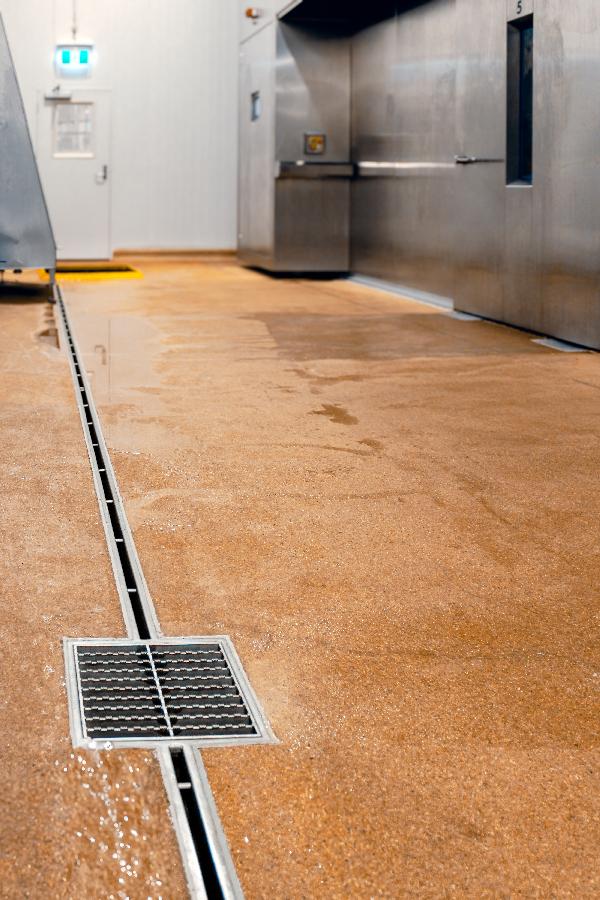Waste water in processing facilities such as factories for food and beverage production, or even commercial kitchens, can often present unique demands on the drainage systems.

Production equipment in these facilities may need regular washing down resulting in large volumes of water containing debris and cleaning agents. The waste water drainage system will need to cope with the volume as well as the contaminants. Additionally, if the equipment operates using liquid, then the waste water system will be required for catchment in the event of a sudden release.
Selecting a drainage system with a wide opening such as 100mm or 200mm allows for greater catchment in situations where a large volume of water is suddenly expelled from equipment or through a sluicing/ cleaning process. Whereas a slot drain with a 20mm opening would be ideal for areas that are less likely to receive large volumes or where flowrates will be consistent, such as chiller openings or around work stations where small accidental spills may occur.
Channel depth is a factor in waste water catchment and hydraulics. The channel needs to provide enough capacity to capture the surface waste water so as not to cause flooding or safety hazards. An outlet, whether in a sump or channel, performs better hydraulically if there is a head of water creating pressure; this increases the flow rate and the speed at which waste water is removed from the drainage channel system. Therefore, when the flow rate of the waste water system is a priority, a sump makes an ideal termination point for a channel. It is deeper than the channel allowing the discharge to waterfall to the sump and increase flow rates. When selecting a customised system, the depth can be fabricated to a requested measurement as determined by the hydraulic design.

When washing down processing facilities that may have larger food particles such as butchers, fishmongers and production factories, a wider grate opening may be required, which would allow for larger particles to be washed or swept into the system. Some processing facilities have a process for separating contaminants such as particles and fats from waste water before it enters the local authority’s system. Strainer baskets are an ideal addition to the outlets.
Allproof has the ability to produce strainers with larger perforations as a fine strainer basket may not suit all applications. For example, in a recent meat processing plant installation, the mesh was fabricated to 20mm openings so that the heavier chunks could pass through and be managed by the trade waste separator further down the outlet line and reduce blockages at the sump. Allproof also supplied strainer baskets with handles and rods that sit just below the grate allowing for easy identification of the sump outlet for removal when the channel is full and maintenance is required.

Allproof’s MC Series channels and grates are manufactured from 304 or 316 stainless steel, designed to perform under load class requirements and tested for slip resistance. This ensures that the operational needs of the facility can be met with fork lifts and fast-moving foot traffic crossing the channels in a busy environment. The MC Series also comes in modular components of 100mm or 200mm wide channels in a range of depths with sumps allowing for off-the-shelf selection, easy transportation and installation into layouts that meet the project’s exact needs. Additionally, Allproof can design and fabricate fully customised drainage channels to meet specific design requirements.


